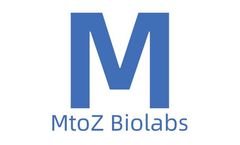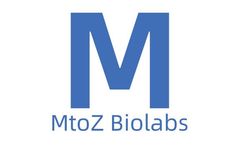Drug Response Articles & Analysis
29 articles found
These cells provide a consistent and reproducible model for studying various aspects of ovarian biology, including cellular differentiation, hormonal responses, and the mechanisms underlying tumor formation. Researchers can manipulate these cells genetically, test drug responses, and explore the effects of various environmental factors on ovarian ...
Preclinical drug discovery represents a critical phase in the development of new therapeutics. ...
For instance, some differentially expressed proteins may be associated with disease progression, drug responses, or cellular stress responses.ApplicationsResearch on differentially expressed proteins has applications in many fields, including cancer, neurodegenerative diseases, metabolic diseases, etc. Moreover, they can serve as disease biomarkers or ...
This can help researchers distinguish between biological variation and technical errors.Clinical ResearchIn clinical research, such as studying DNA methylation patterns under a certain disease state, more parallel samples (such as 5 or more) may be needed to better capture biological variability under disease status.Drug Response ResearchIn studying individual differences in ...
These differences may lead to different susceptibilities to diseases, drug responses, and treatment effects. With this technology, doctors can more accurately assess the disease status of patients, predict the trend of disease progression, and formulate more personalized treatment plans, improve treatment effects and reduce side effects.1. ...
Drug antibody testing is a laboratory testing method specifically designed to evaluate the immune response of the human body to certain drugs. ...
Active pharmaceutical ingredients (APIs) are biologically active components in pharmaceutical drugs, responsible for the intended therapeutic effects. APIs are prepared through chemical synthesis or biotechnology, meeting stringent quality standards and regulatory requirements. ...
Risks of HCPs In general, HCP constitutes the major process-related impurity in the drug product in addition to the target protein. The main risk associated with HCP is immunogenicity and they have the potential to affect the safety and efficacy of a given drug product. ...
Their structures are then analyzed and optimized to obtain new drug molecules that act on the target proteins. Study drug's mechanism of action Lipidomics can elucidate changes in lipids and related enzymes after drug action, revealing drugs' possible mechanism of action. ...
At the heart of this endeavor lies the intricate relationship between drugs, their targets, and the diseases they aim to treat. One of the fundamental aspects of drug discovery is the analysis of the drug-target relationship. ...
In order to more effectively deliver chemotherapy drugs, Small Molecule Drug Conjugates (SMDC), Antibody Drug Conjugates (ADC), and Degradation Antibody Conjugates (DAC) have been successively explored and developed, enhancing the therapeutic index while providing selective delivery. ...
Microneedle patch technologies have revolutionized the field of drug delivery, offering a wide range of advantages over traditional methods. ...
Introduction of Drug Affinity Responsive Target Stability (DARTS) Drug target protein identification is an important step in the research and development of new drugs. Drug Affinity Response Target Stability (DARTS) is a technique that can rapidly and directly identify potential target proteins ...
These biomarkers aid in disease classification, patient stratification, and the development of targeted therapies, paving the way for precision medicine. Drug Discovery and Development: DGE analysis facilitates the identification of genes responsive to specific drug treatments. By unraveling the molecular mechanisms underpinning ...
By analyzing gene expression patterns in patient samples, scRNA-seq can identify molecular signatures associated with drug response or disease progression. This information can guide treatment selection and optimize patient outcomes. Moreover, scRNA-seq can enable more precise monitoring of drug response and disease progression ...
Through careful experimentation, researchers can monitor the response of these models to a specific drug candidate, determining its therapeutic potential and dosage requirements. ...
These biomarkers assist in disease classification, patient stratification, and the development of targeted therapies, thereby paving the way for precision medicine. Drug Discovery and Development: DGE analysis facilitates the identification of genes that respond to specific drug treatments. By unraveling the molecular mechanisms underlying ...
Analyzing gene expression patterns in patient samples helps identify molecular signatures associated with drug response or disease progression, guiding treatment selection and optimizing patient outcomes. Moreover, scRNA-seq enables precise monitoring of drug response and disease progression in clinical trials. By profiling ...
Thanks to the rapid development of nano-drug carriers, combined with the good biological properties of chitosan, chitosan-based drug carriers have increasingly become one of the hotspots in the field of drug delivery research. At the same time, in order to improve its bioavailability, different smart responsive ...
These enzymes can activate, deactivate or reactivate drugs through structural changes in their composition. The direct effect of microorganisms on drug response is that the intestinal flora affects the bioavailability of a drug by altering its chemical structure. ...














